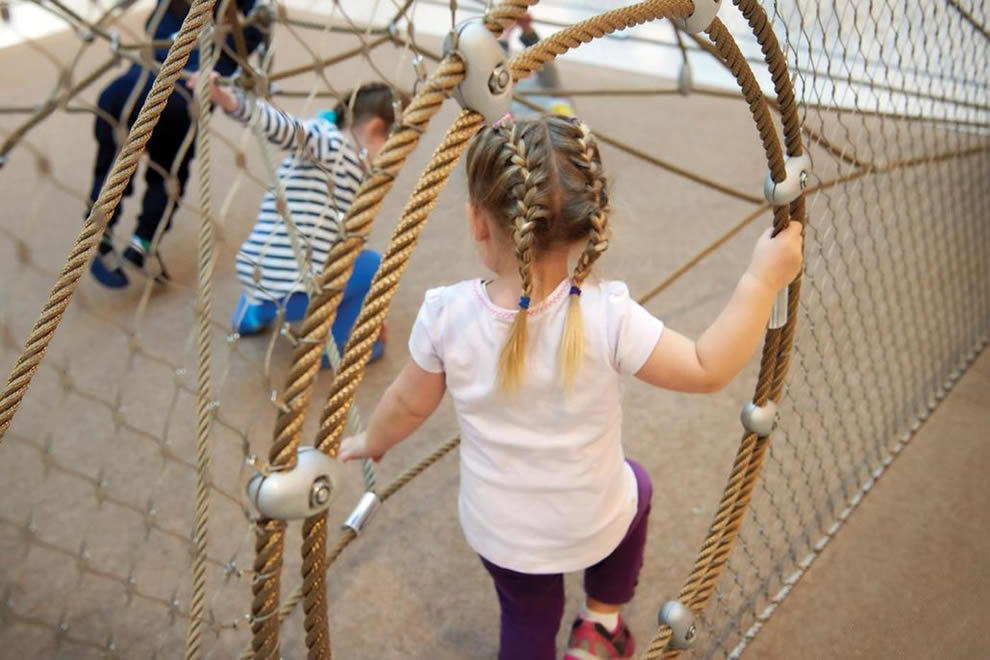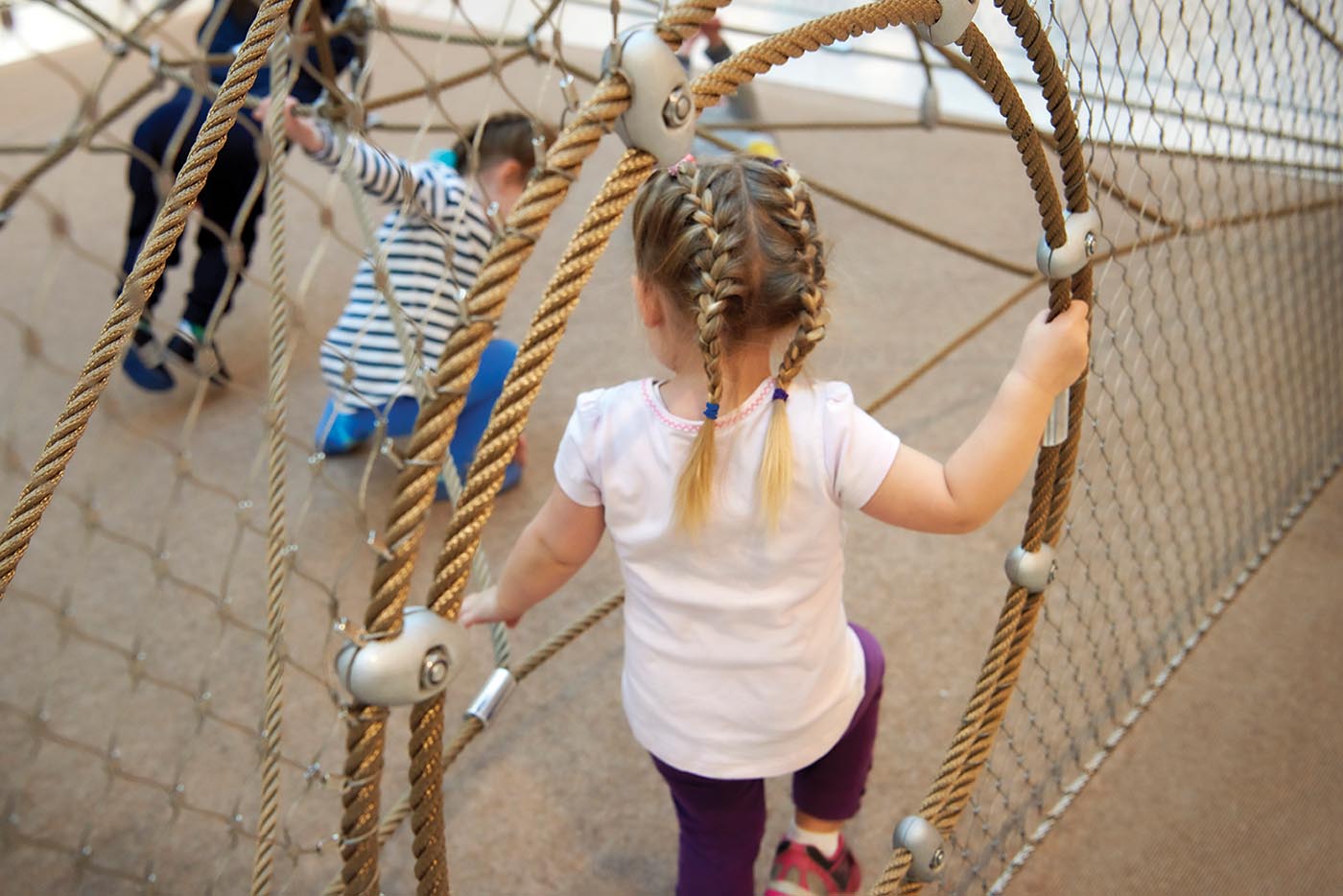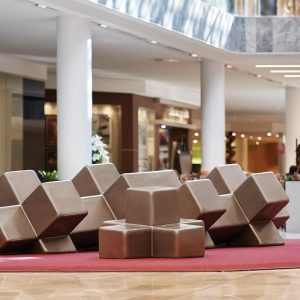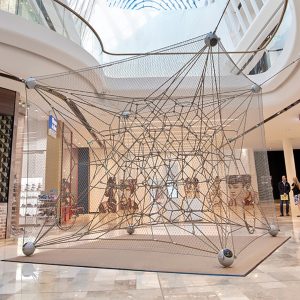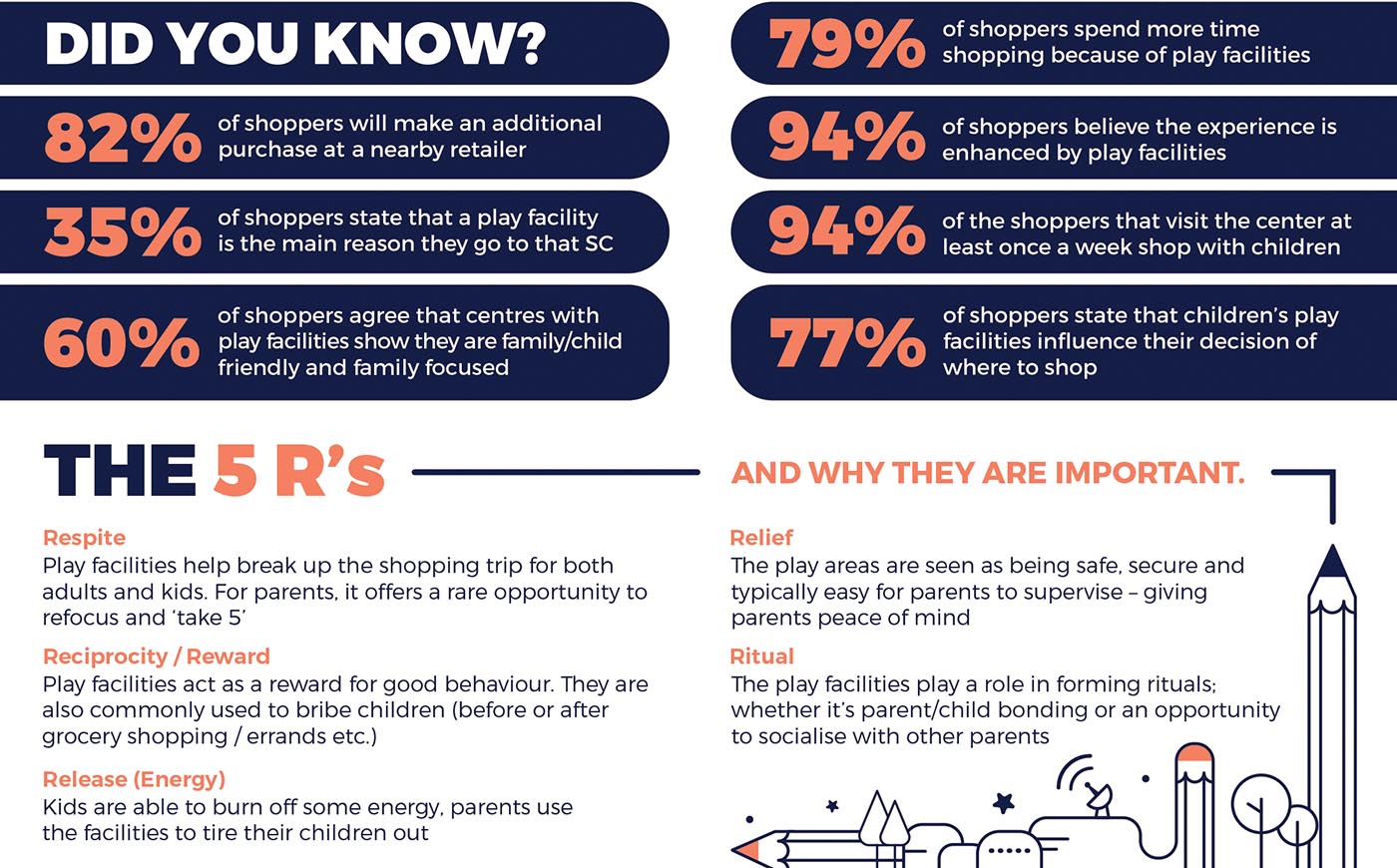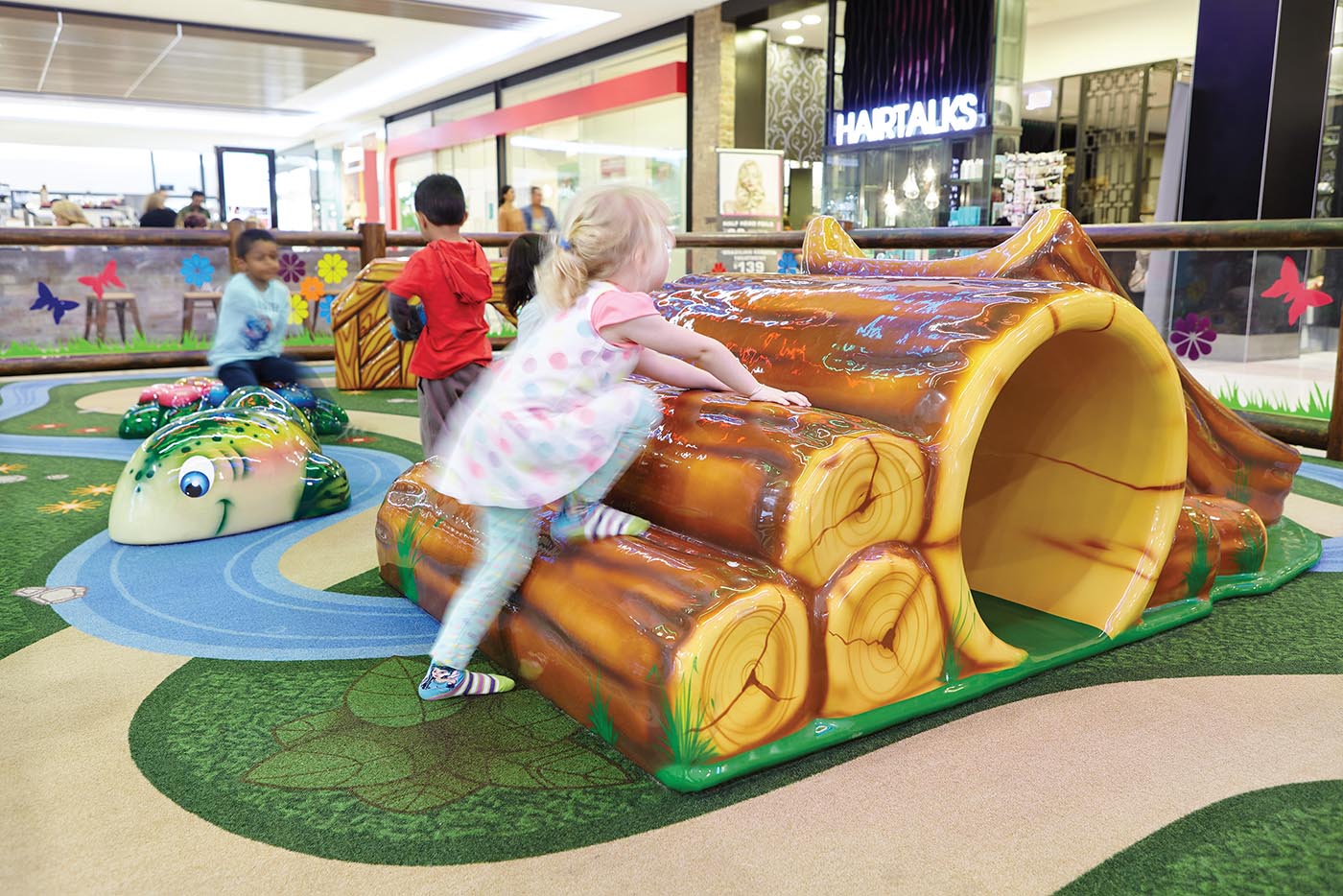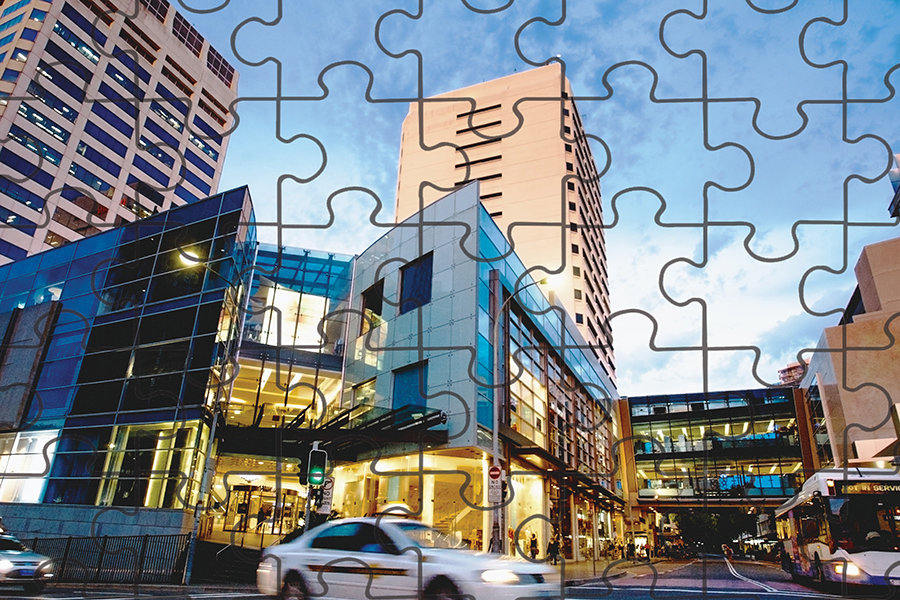If you thought a ‘children’s play area’ was just some sort of ‘feel good’ addition to your centre, which had no real commercial reality, something to be stuck in an awkward, hard-to-lease location, then you’ve got it wrong. Would you believe that many shoppers were willing to drive one hour past their local centre to visit one with a great children’s play area? Read on…
In an increasingly ‘more is more’ world, shopping centre groups are realising the necessity to develop centres that provide more than just a shopping experience. We see developers and centre owners continuing to innovate, reinventing the shopping centre format. Centres are now positioned as the ‘town centre’ of a community, offering experiences that are an extension of their customer’s life – this is key in creating loyalty with shoppers.
We are progressively seeing more sophisticated children’s play areas, new and unique pop-up shops, and food courts transformed into dining precincts that include both food and entertainment offerings.
In particular, shopping centres have realised the importance of incorporating children’s play, placing them in key locations – close to a food and beverage offering, within the children’s precinct or in a slower area of the centre to help activate the space. These play areas are no longer an afterthought, but are fast becoming central in redevelopments and design.
Centre groups understand that play facilities are a key driver and drawcard for families, carers and mothers’ groups. Centres that properly execute play benefit from increased foot traffic, retailer spend and enhancement of the shopping centre perception.
We are consistently pushing the boundaries, creating fun and innovative play areas that feature unique fabrications across climbing, digital and structural elements that keep children playing longer, ensuring a new and engaging experience every visit.
- Eastland, Melbourne
- Eastland, Melbourne
- Eastland, Melbourne
We recently collaborated with Starburst Insights to conduct market research across shopping centres in Australia on the impact play facilities have on families and the retail and centre environment.
Improved customer experience
A few key statistics show that 77% of shoppers state that children’s play facilities influence their decision on where to shop, while a significant 90% of shoppers agreed that having facilities to entertain children while at shopping centres is important to them.
The research reveals that more than 60% of shoppers agreed that centres with play facilities show they are child friendly and family focused, and that they cater to their shoppers and understand their needs and the market.
By providing a play area, the centre is working to improve the customer experience, but what we also found was that the majority of our respondents were staying longer and making auxiliary purchases at surrounding retailers.
The research showed than more than 60% of shoppers visit the centre at least once a week, and 55% use the play facilities every time. While in the play area, 82% of those shoppers make additional purchases: for example, coffee, drinks and food.
The most astounding find was that respondents were willing to drive an hour past their local centre in order to shop at a centre with children’s play facilities.
By providing a play facility in a shopping centre you are creating an important space for the family consumer, where integrating play into their shopping trip means they can get more done – a once-negative experience is now a positive for all.
Increased dwell time
Creating positive experiences increases dwell time, encouraging families to stay longer. It’s a great way for both children and parents to take a break and recharge before continuing on their shopping journey. By entertaining the kids and providing a safe environment for them to burn off energy, families are less likely to seek the exit and continue shopping for longer.
The position of the play area in the centre is also important to improve dwell time. Closely monitoring foot-traffic patterns in the centre can help to determine the most fertile area for the play facility.
- Stanhope Village, NSW
For example, play areas that are integrated throughout the centre provide numerous occasions for families to stop and engage before they continue shopping.
Increased sales
The location of the play area can help to boost sales of the surrounding retailers, which is why they are often located next to children’s shops and food and beverage retailers.
Having the children’s play facility next to a cafe provides the perfect spot for parents to sit and relax with a cup of coffee or snack whilst watching their children socialise, release energy and have fun.
Higher foot traffic
Families often use the promise of visiting the play area as motivation to visit the centre more frequently, as it allows them to spend longer time running errands with children.
As the play areas are safe and secure, it gives families peace of mind to allow their children to play. It’s also an inexpensive option to entertain the children, no matter the weather. This means parents will choose to visit the centre more often, over other entertainment options.
There have been a lot of changes in the retail space over the past decade, with the most significant shift being the rapid growth of online shopping. In order to compete in this ever-expanding digital world, shopping centres have to address the need to ensure customer experiences are engaging and valuable for the whole family. Providing play areas can transform a centre from just a place to go shopping, to a must-visit destination. Happy families mean happy shoppers, benefitting retailers through increased dwell time, increased sales and growth and overall enhances the shopping centre perception.


